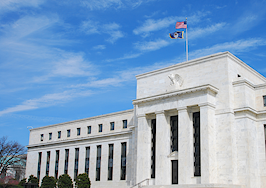New markets require new approaches and tactics. Experts and industry leaders take the stage at Inman Connect New York in January to help navigate the market shift — and prepare for the next one. Meet the moment and join us. Register here.
Housing starts, building permits, and housing completions all posted month-over-month declines in October, according to data released Thursday by the U.S. Census Bureau.
Housing starts declined 4.2 percent from September and were down 8.8 percent from October 2021 levels, reaching a seasonally adjusted annual rate of 1,425,000, the data shows.
The decline in housing starts was not as dramatic as a decrease posted in September when starts plunged 18 percent.
Building permits were at a seasonally adjusted rate of 1,526,000, the data shows, 2.4 percent below September levels and 10.1 percent below October 2021 numbers.
Housing completions were the only category to chart an annual increase — rising 6.6 percent above October 2021 levels — but still fell 6.4 percent below September levels to 1,339,000.
News of continued declines in new construction comes as builder sentiment fell for the 11th month in a row, driven by low consumer demand due to high borrowing costs, and high construction costs spurred by inflation.
That slowing demand is resulting in builders lowering their production levels, the National Association of Homebuilders (NAHB) said.
“Mirroring ongoing falloffs in builder sentiment, builders are slowing construction as demand retreats due to high mortgage rates, stubbornly elevated construction costs and declines for housing affordability,” Jerry Konter, chairman of the NAHB said in a statement on Thursday.
2022 will be the first year since 2011 to post an overall decline in single family housing starts, the NAHB said, and experts are predicting further declines in 2023.
“This will be the first year since 2011 to post a calendar year decline for single-family starts,” NAHB Chief Economist Robert Dietz said in a statement. “We are forecasting additional declines for single-family construction in 2023, which means economic slowing will expand from the residential construction market into the rest of the economy.”
Developing













